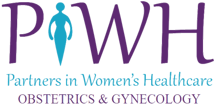What happens during the Acessa Procedure?
Two tiny incisions are made that allow the physician to treat your fibroids. Using a small scope and ultrasound guidance, the surgeon treats each fibroid individually with radiofrequency energy that is specifically controlled to destroy the fibroid and leave the surrounding tissue unharmed.
The Acessa Procedure involves five basic steps: (1) Two tiny incisions are made. (2) A laparoscopic ultrasound probe is used to determine the location and size of all fibroids present. (3) The Acessa handpiece tip is then advanced into the fibroid using ultrasound guidance. (4) The electrode array on the tip of the handpiece is then deployed into the fibroid, and, (5) energy is applied based on the size and location of the fibroid, destroying the fibroid.
How long does the Acessa Procedure take?
The surgery is an outpatient procedure, so you will be able to go home the same day. The length of surgery varies depending on the number and size of uterine fibroids that are treated. Surgery typically lasts several hours.
Is general or local anesthesia used?
General anesthesia is used for the Acessa Procedure, so you will not be awake during the procedure.
Is the Acessa Procedure painful?
The procedure is performed under general anesthesia so you will not feel pain during the procedure. Following the procedure you may experience mild abdominal pain for which your physician may prescribe medication.
Since this is surgery, how big will my incisions be?
The Acessa Procedure is a laparoscopic surgical procedure. Laparoscopic surgery is frequently called the “band aid” surgery. In most cases, there will be two incisions, both ¼” or less in length.
How safe is the Acessa Procedure?
The Acessa Procedure has been clinically proven to be very safe and effective for the treatment of uterine fibroids. In fact, in three separate clinical studies leading up to FDA clearance, the complication rates were extremely low. Your physician can explain the potential complications of the Acessa Procedure as well as those of other available fibroid therapies.
What type of recovery can I expect?
The Acessa Procedure is performed as outpatient surgery and patients usually go home the same day, once they have recovered from the anesthesia. Patients typically return to work in 3-4 days.
When can I expect to see results from the Acessa Procedure?
It varies person to person as to when results are seen, however symptomatic relief of pelvic pain and pressure is typically seen shortly after the procedure is performed. Heavy bleeding is noticeably improved within three to six months, sometimes as soon as the first menstrual period.
What is the chance I will need another procedure to treat fibroids?
Very few patients require further treatment following the Acessa Procedure. The cause of uterine fibroids is unknown, however once a fibroid is destroyed it cannot grow back. The Acessa Procedure uses ultrasound to identify the fibroids for treatment. This means your surgeon will find most, if not all, of your fibroids and treat them during the procedure. In the largest clinical trial to date, the need for further treatment was less than 5% per year. The chance of fibroids growing back after the procedure will vary from patient to patient.
How happy are patients who have been treated with the Acessa Procedure?
Over 90% of patients receiving the Acessa Procedure were satisfied with the treatment and would recommend it to a friend. In addition, when Quality of Life scores were measured before the procedure and again 3 months following the procedure, scores improved by over 100%. The improvements in Quality of Life were maintained for three years following the procedure.
Will my insurance cover the Acessa Procedure?
The Acessa Procedure is usually pre-authorized before patients undergo the procedure. Our office will work with you through the preauthorization and reimbursement process.
How do I know if I’m a good candidate for the Acessa Procedure?
If you suffer from heavy or prolonged menstrual bleeding, abdominal pain and pressure, frequent urination, and/or low energy due to anemia, you may have uterine fibroids. Uterine fibroids are very common. In fact, approximately 70% of women have fibroids by age 50.
If you suffer from these symptoms and have been diagnosed with uterine fibroids, you may be a candidate for the Acessa Procedure. Schedule an initial consult to find out if the Acessa Procedure is right for you.
